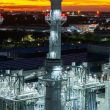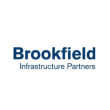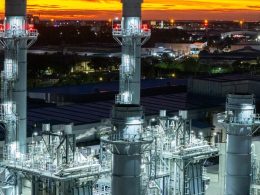by Hubert Marleau, Market Economist, Palos Management
If the Fed does cut interest rates more than it ought to and investment in Artificial Intelligence keeps advancing, the S&P 500 will likely touch 7000 this year-end and probably head toward 7700 by the end of 2026.
The Fed Spoke with a Cautious Tone
Lacking official data on both employment and inflation, the Federal Reserve is driving monetary policy under two blind spots, complicating its dual mandate. Because of the shutdown, the CPI, PPI and PCE may never be published, and the BLS’ October job report will likely be distorted by federal employee furloughs. Thus the direction of the monetary stance has come instead through a plethora of speaking engagements from a series of monetary officials, all of whom are flying blind.
MONDAY: Fed Vice-Chairman Philip Jefferson made a case that the Fed should proceed slowly in approving further rate cuts because monetary policy has moved closer to a neutral posture, but is restrictive enough to slide inflation, which is still too high, being above its 2.0% target.
Federal Reserve Governor Stephen Miran said on CNBC that he could support a quarter-percentage point rate cut at the Fed’s December meeting but argued that a strong case exists to favour a half-point move, if one looks at where the economy will be next year and neglects backward-looking data.
San Francisco Fed President Mary Daly, meanwhile, published a blog post, noting that policymakers should keep an open eye as shifts in the labour supply, investment and tariff-related price changes play out.
TUESDAY: Fed Reserve Governor Michael Barr spoke in Singapore but made no comment on monetary policy or the state of the US economy. However, the street is aware that he wants policymakers to be attentive to the labour market to ensure it remains solid.
WEDNESDAY: No less than six Fed officials spoke: quite the cacophony.
Rafael Bostic announced his retirement as President of the Atlanta Fed. He's only 59 years old and in good health, so he could have easily sought reappointment.
Anna Paulson, who has not expressed where her sentiment lies, will be the next President of the Philadelphia Fed, taking office in July 2026.
Federal Reserve Governor Christopher Waller said on Bloomberg News that the private sector is not doing as well as everybody thinks it is, making the case for the Fed to lower borrowing costs before the labour market begins to deteriorate.
In prepared remarks, John Williams, the New York Federal Reserve President, reiterated that the time is getting closer when the Central Bank will have to restart bond purchases as part of a technical effort to maintain control over short-term interest rates, insisting that they will have no implications on monetary policy.
Boston Fed President Susan Collins, a voting member of the rate-setting Federal Open Market Committee (FOMC), said that based on her baseline outlook, it may be appropriate to keep policy rates at the current level for some time to balance inflation and employment risks in this highly uncertain environment, arguing that there are several reasons to have a relatively high bar for additional easing in the near term.
The Fed’s Governor Stephen Miran said to a London crowd that the September rate cut was not big enough and advocated for a jumbo cut at the December FOMC. However, he pivoted, saying that there was still a “but”.
THURSDAY: In an appearance before the Pittsburgh Economic Club, Cleveland Federal Reserve President Beth Hammack said: "Monetary policy needs to remain in a position where it can help lower inflation pressures; on balance, I think we need to remain somewhat restrictive to continue putting pressure to bring inflation down towards our target.”
FRIDAY: Lorie Logan, Dallas Fed President, speaking at an ECB Conference said that it is very important to keep inflation anchored and to return Fed’s balance sheet to a more normal size.
These aforementioned Fedspeeks have caused nervousness. Fractured over which poses the greater threat, the authorities have put on a brave face on their ability to run the money markets in the absence of crucial government data needed to figure out what they should do. As a result, the market was pricing on Friday only a 50% chance of a rate cut in December compared to 98% a month ago.
Nonetheless, I have 4 good reasons why I think the Fed will indeed cut interest rates on December 10. The neutral rate is lower than the policy rate, the dollar has stabilised, interest differentials with the rest of the world are widely in favour of the US, and inflation expectations have been steady.
The AI Boom Is Promising, But
JP Morgan claims that as much as $5.3 trillion will be invested in global data centres, AI infrastructure and related power supplies over the next five years. The latest evolution in the digital revolution has particularities that are not found - at least not to the same degree - in other mega-trends. It feeds on itself, because the amount of data that can be processed, analysed and stored at ever-faster speeds increases in perpetuity, no matter what, to infinity. This phenomenon is promising for future economic growth because AI will grow unabated, provided AI infrastructure and related power supplies keep pace; there’s money to be made for the builders; and such huge investments boost productivity and profits for the economy as a whole.
Unfortunately, there are a few side constraints that will have to be overcome, if this infinite thirst is indeed the reality. While there are numerous impediments and construction complications, such as permitting issues, availability of electricity, the costs of building and social backlashes, there are many indications that the hyperscalers will be able to conquer the red tape, the challenge and the bottleneck attached to such constraints with ingenuity, government assistance and science, because AI’s geopolitics is just too important to neglect.
My main concern is the secondary effect that the funding of these humungous projects could have on other parts of the economy. The builders do not have free cash flow to fund, or the reservoir of capital, to fund their lofty ambitions. Accordingly, they will have to suck all or most of the private savings of households and corporations alike, leaving little for others - a situation that could undermine the rest of the economy. The only way to avert Morgan Stanley’s massive sinkhole of $1.5B through 2028, without cheating out other sectors of the economy will be with lower corporate taxes, lower dividend taxes, reduced capital gains, higher depreciation allowances, lower government deficits and/or more foreign capital.
What Took Place in the Week Ended November 14?
On Sunday, U.S. stock futures rose amid hope of an imminent deal to end the government shutdown, and of a proposition floated by the President that a direct payment to average Americans, stemming from tariff revenues in lieu of healthcare subsidies, thereby relinquishing his idea of using the tariffs to pay down the national debt, and to persuade the Supreme Court to accept the tariffs as legit under emergency powers.
On Monday, the S&P 500 rebounded while riskier tech stocks popped as investors once again bought the dip in equities as the US Senate advanced a plan to end the government shutdown. While the idea of a tariff dividend combined with a compromise bill to end the shutdown would transfer wealth for the government to the private sector, the mounting risk of a deteriorating fiscal deficit vaulted gold back above $4,100 and bitcoin to $106,000-plus.
On Tuesday, the stock rally faded as a new report from payroll processing firm ADP showed the private-sector job market had contracted a bit in late October, struggling to produce jobs, and had shed an average of 11,250 jobs a week consistently in the last four weeks . The market regained its footing later in the day, however, when investors aggressively rotated from growth to value stocks, in particular into the healthcare, energy and consumer-staples sectors. The S&P 500 rose 0.2% to 6847.
On Wednesday, the S&P 500 rose less than 0.1% to end at 6891. A mixed day as investors watched Washington for the anticipated end of the government shutdown and continued their rotation out of the tech sector into healthcare and financial companies. Late in the evening, a deal to resume government functions came together, but the fog did not completely lift for October data on inflation, and employment may be neither restored nor released, because it may take weeks to catch up.
On Thursday, the S&P 500 got pummelled on its worst day in more than a month, falling 113 points or 1.7% to finish at 6737. Doubt about further Fed interest-rate cuts delivered a broadly risk-off session as the implied probabilities of a December rate cut slipped below the 50% threshold, causing heavy selling across the board, but especially in risky cases. However, defensive names bucked the sell-off.
On Friday, the S&P 500 regained some strength, but still fell by 0.05% to 6734 as tech stocks cautiously bounced off earlier losses. The NY Fed NowCast for real GDP growth is 2.3% for Q3 and 2.1% for Q4.
The Near-Term Stock Market Outlook
Last week I wrote: “The U.S. stock market has roared dizzyingly past every yellow traffic light en route to record highs after record levels from the lows of last April, manifesting the durability of this cycle, even though the ‘Buffett Indicator’ has shown throughout the piece that the monetary value of equity markets, presently around $72 trillion, has become more than twice the size of the economy. In this connection, numerous commentators have raised red flags about the fact that the AI boom and related trades have taken all of the oxygen out of the market.
“The long-awaited pullback has come, which was both needed and overdue, because of the thesis that rich valuations don’t tussle well with returns on investments that are not immediate. While I understand the reasoning behind this concern, the ongoing correction has a lot more to do with falling liquidity, stemming from the amassing of money by the Treasury, which has actually sapped the private market. In this connection, retail and novice investors alike have decided to skip the dip, forcing Main Street to jive with Wall Street.
“In my judgement, at 6600 for the S&P 500, enough froth has been removed to allow the big tech stocks to hold their own based on the strength of their earnings to indirectly support the wider market.”
There you have the corrections that everyone saw coming in a sudden rush like similar drawdowns, triggered because of an apparent hawkish pivot in the thinking of the Fed’s monetary officials. As a result, the December Fed meeting is a toss-up as to whether it will pause or not. In such circumstances, however, it's the technical factors that tend to have greater significance; and interestingly, even as the S&P 500 sold off, driven by tech losses, market breadth has held up well, with advances outstripping declines on most days and upside volumes higher than downside volumes since the rout began, with nearly 60% of the shares listed above their 200-day moving average, suggesting that the bull rally is not dead yet.
The S&P 500 closed at 5882 at the end of 2024. It's up 16.2% since then to 6814 and would be up 19.0% if my 7000 target for year-end is reached, compared to an average annual increase over the past 10 years of 12.3%. I have faith in this prediction not only because retail demand has been ferocious, but because corporate stock buybacks are consistent, seasonal trends are strong, and fund flows are positive. And yet, contrary to popular belief, the bulk of the increase has been driven by forward earnings, with only 2.7% stemming from higher valuations so far, the P/E multiple having risen from 22.4 to 23.0.
Stepping up as the first ones to roll out forecasts for 2026, Goldman Sachs (GS) and Yardeni Research (YR) are themselves predicting new highs. GS’s strategists see the S&P 500 hitting 7600 by the end of 2026 while YR is targeting 7700 by the end of 2026 as its base-case scenario with a 50% subjective probability, but sees a 30% chance of a melt-up and a 20% chance of a melt-down.
Copyright © Palos Management














